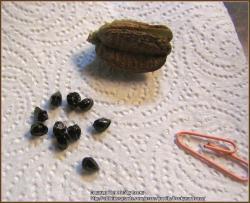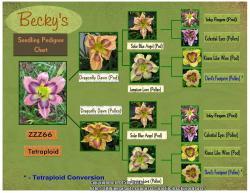"If you don't look at how the foliage "behaves" in different weather, how do you determine hardiness?
Hardiness (winter) is a measure of how a plant survives cold weather. It does not need to have any relationship with how the leaves behave (and usually probably has no relationship). A daylily is hardy to my zone 4 winter weather if it survives winter in my garden. The only way one can determine whether a daylily cultivar is winter hardy is by seeing if it survives winter. Unfortunately hardiness is related to the actual low temperatures reached during particular winters and to the presence or absence of freeze thaw cycles during winter, depth of snow, and other factors. So plants cannot be labelled as being winter hardy or not as a general description - they can be labelled as being winter hardy to specific low temperatures. A cultivar could be described as being winter hardy to -5F or to -15F or to -30F, etc.
We could look at a couple of trees. A deciduous tree, such as a maple tree, loses its leaves before winter (zone 4) arrives. It will be obviously dormant during winter - dormant meaning not growing new leaves during winter. We could compare a maple tree to a spruce tree. A spruce tree does not lose its leaves (its needles) before winter. It is evergreen and it is also dormant during winter (zone 4). What a plant does with its leaves (that is, it either loses them before winter [dormant] or keeps them for several years including during one or more winters [evergreen]) does not necessarily affect whether the plant is winter hardy.
There is another category of growth rather than of foliage behaviour. Whether a daylily is deciduous or evergreen is a foliage characteristic.. Whether a daylily can become dormant or is ever-growing is a growth characteristic. A daylily that is ever-growing and tries to grow during warm spells in winter might not survive well in some locations but might survive quite well in other locations where winter is cold and there are no warm spells during the winter, etc.
Bottom line - I determine whether a daylily is winter-hardy to my zone 4 garden conditions by whether it survives. Otherwise I cannot know whether a daylily characterized/registered as dormant or whether a daylily characterized/registered as evergreen will actually survive here.

